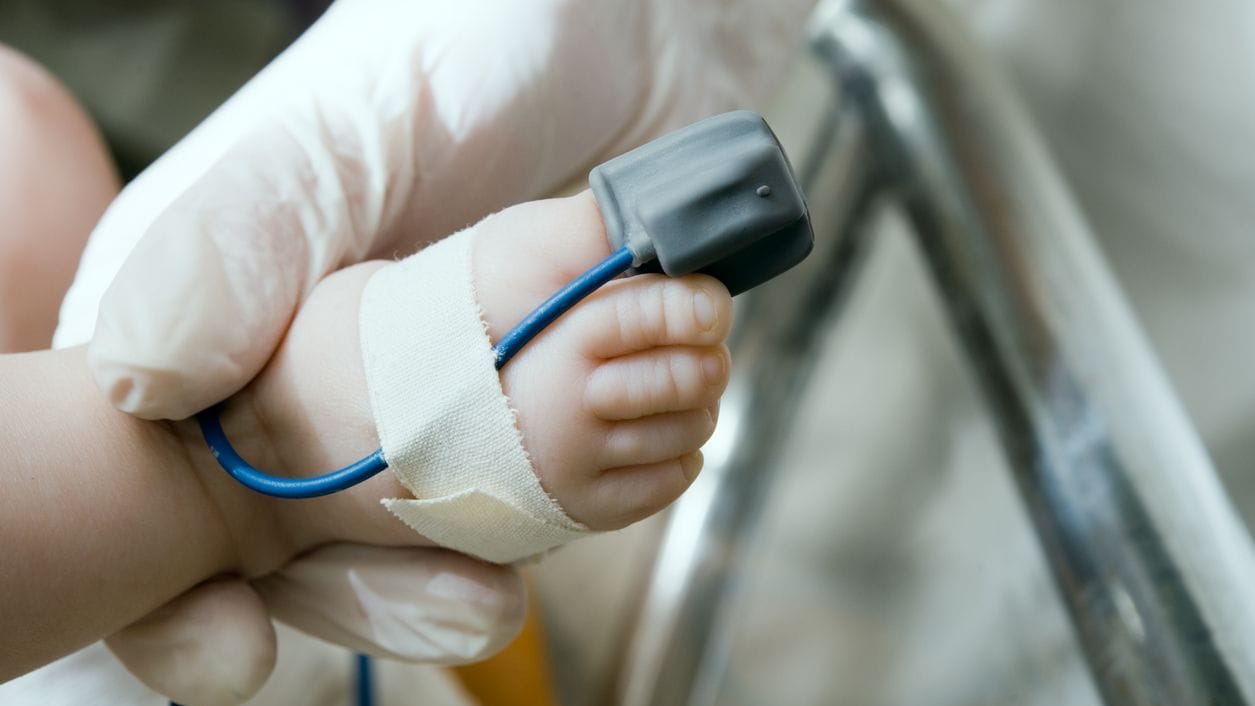Key points
- Tetralogy of Fallot (pronounced te-tral-uh-jee of Fal-oh) is a congenital heart defect. Congenital means present at birth.
- Tetralogy of Fallot occurs when a when a baby’s heart does not form correctly during pregnancy.
- People with this condition should schedule routine checkups with a heart doctor to stay as healthy as possible.

What it is
Tetralogy of Fallot is made up of the following four defects of the heart and its blood vessels:
- A hole in the wall between the two lower chambers, or ventricles, of the heart - led a Ventricular Septal Defect (VSD).
- A narrowing of the pulmonary valve and main pulmonary artery. This condition also is called pulmonary stenosis.
- The aortic valve, which leads to the aorta, is enlarged and receives blood from both ventricles. In a normal heart, it only receives blood from the left ventricle. In this defect, the aortic valve sits directly on top of the VSD.
- The muscular wall of the lower right chamber of the heart (right ventricle) is thicker than normal - ventricular hypertrophy.
Because a baby with tetralogy of Fallot may need surgery or other procedures soon after birth. This condition is considered a critical congenital heart defect (critical CHD).

Occurrence
About 1 in every 2,077 babies in the United States are born with tetralogy of Fallot[1]. This means that about 1,768 babies are born with tetralogy of Fallot each year.
Signs and symptoms
Tetralogy of Fallot can cause oxygen in the blood that flows to the rest of the body to be reduced. Babies born with tetralogy of Fallot may have a bluish looking skin color, called cyanosis. This change in color is because their blood doesn't carry enough oxygen. At birth, infants might not have blue-looking skin, but may later develop sudden episodes of bluish skin during crying or feeding. These episodes are called tet spells.
Infants with tetralogy of Fallot or other conditions causing cyanosis can have problems including:
- A higher risk of getting an infection of the layers of the heart, called endocarditis
- A higher risk of having irregular heart rhythms, called arrhythmia
- Dizziness, fainting, or seizures, because of the low oxygen levels in their blood
- Delayed growth and development
Risk factors
The causes of tetralogy of Fallot among most babies are unknown. Some babies have heart defects because of changes in their genes or chromosomes. A combination of genes and other risk factors may increase the risk for tetralogy of Fallot. These factors can include things in a mother's environment, what she eats or drinks, or the medicines she uses.
Testing and diagnosis
Tetralogy of Fallot may be diagnosed during pregnancy or soon after a baby is born.
During pregnancy
During pregnancy, screening tests (prenatal tests) check for birth defects and other conditions. An ultrasound, a tool that creates pictures of the baby, may detect tetralogy of Fallot. If the health care provider suspects tetralogy of Fallot from the ultrasound, they can request a fetal echocardiogram confirming the diagnosis. A fetal echocardiogram is a more detailed ultrasound of the baby's heart. This test can show problems with the structure of the heart and how the heart is working with this defect.
After the baby is born
Tetralogy of Fallot usually is diagnosed after a baby is born. It is often diagnosed after the infant has an episode of turning blue during crying or feeding (a tet spell). Findings on a physical exam may make a healthcare provider suspect a baby has tetralogy of Fallot. This may include bluish-looking skin or hearing a heart murmur. If these findings are present, the health care provider might request one or more tests to confirm the diagnosis. The most common test is an echocardiogram, which is an ultrasound of the heart.

Tetralogy of Fallot can also be detected with newborn pulse oximetry screening. Newborn screening using pulse oximetry can identify some infants with tetralogy of Fallot before they show any symptoms.
Treatments
Tetralogy of Fallot can be treated by surgery soon after the baby is born. During surgery, doctors widen or replace the pulmonary valve and enlarge the passage to the pulmonary artery. They also will place a patch over the VSD to close the hole between the two lower chambers of the heart. These actions will improve blood flow to the lungs and the rest of the body.
What to expect long-term
Most infants will live active, healthy lives after surgery. However, they will need routine checkups with a heart doctor to monitor their progress. Providers will check for other health conditions that might develop as they get older. As adults, they may need more surgery or medical care for other possible problems.
- Stallings EB, Isenburg JL, Rutkowski RE et al; for the National Birth Defects Prevention Network. National population-based estimates for major birth defects, 2016–2020. Birth Defects Res. 2024;116(1):https://doi.org/10.1002/bdr2.2301
